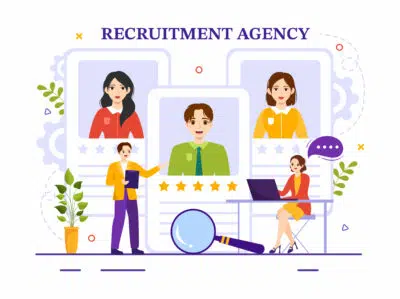Data-driven talent acquisition is the new mantra

5 Effective ways of fostering a culture of belonging in the hybrid workplace
August 10, 2023
Agile staffing takes the organisation to a new level
August 10, 2023
Over the years, Talent Acquisition (TA) has become vital to business success. Businesses are realising the value of talent acquisition viz-a-viz recruitment. Talent acquisition focuses on the long-term Human Resources (HR) strategy, while recruitment is just one part of it. With companies placing a high-value on the human capital, strategic talent acquisition becomes necessary. Poor hiring decisions lead to a huge impact on time and cost. Bad recruiting experiences can have an impact on offer acceptance as well as employer brand. According to a PwC survey, as many as 49% of people turned down offers due to poor recruiting experience, and 56% respondents said they would discourage others from applying.
That brings the question, are technology and data the answer to talent acquisition issues? Well, yes and no. Technology cannot solve all TA problems, but can certainly help minimise and even resolve many of them. By using data to streamline hiring, organisations can hire the best talent, improve hiring experience, and reduce cost and time per hire.
How do you leverage data for talent acquisition?
Streamlining the hiring process results in cost-effective hiring, and data plays a key role in doing so. By tracking data, HR leaders can gain insights into what’s being done right, and what can be improved. Here are a few tips:
Gather relevant data: You need to first understand candidate sources - job boards, social media, professional associations, employee referrals, websites, and so on. Conduct a complete talent market analysis to reveal the best sources of talent, candidate expectations, skills, preferences, and any skill gaps that you may encounter during the hiring process.

Identify appropriate metrics: Data can be incredibly useful, but the sheer volume of it can overwhelm and lead you down the garden path, if you don’t use the right metrics. By identifying pertinent metrics and Key Performance Indicators (KPIs), you can tweak the hiring process as required. For instance, time-to-hire is a key metric to track. This metric can give information about the amount of time a position is open before it is filled, the time for the candidate interviewing process, and the time taken for an applicant to receive an offer of employment. Cost-per-hire is another key metric which identifies the average cost to fill a specific position or role. An Applicant Tracking System (ATS) can help identify conversion rates, such as, how many applicants actually accepted job offers, number of applicants abandoning the hiring process, and the stage where they were at, etc. Such information helps identify possible issues in the hiring process, and where changes can be made. This data can also be used to create a hiring baseline to measure hiring performance over time, and make data-driven decisions for process optimisation and improvement.
Use automation to improve: There are several automated hiring tools and technologies out there, but the key is to deploy the ones most useful to you. Once hiring challenges have been identified, you can use intelligent hiring automation tools to improve various stages of the process. For example, automation of hiring processes such as candidate screening, talent assessments, etc., can greatly free up valuable resources to manage other things that require human attention. It is crucial to have all the required systems such as HR Information Systems (HRIS) and ATS in place, in order to both gather the required data, and keep them updated. All the systems need to be integrated and “talk” to each other. Careernet’s digital hiring solutions can integrate and work seamlessly with existing in-house systems.
Delve deep with analytics: Hiring the best talent requires companies to stay ahead of competition. AI-based analytical platforms can read multiple sources in different formats - historical data, industry trends, and other internal systems and processes to deliver deep insights to HR leaders to forecast hiring needs. Candidate information such as preferences, skills, expectations, etc., can be used to deliver a personalised hiring experience.
In the now normal digital world, companies need to hire faster and smarter. Companies should use data wisely - what goes around, comes around. For instance, the employer brand can be impacted by Glassdoor reviews. Automation is not always one-size-fits-all, and needs to be customised to specific requirements. By leveraging the right tools and technology, and adopting a data-driven recruitment strategy, organisations can make better hiring decisions that help improve business performance and create long-term value.


